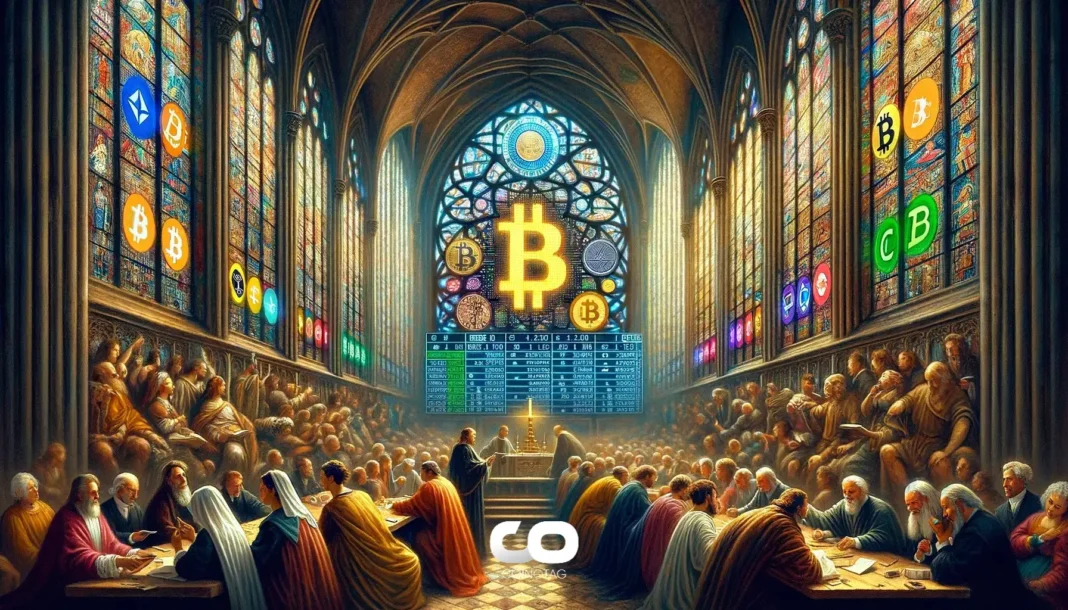The Satoshi Nakamoto statue in Lugano, Switzerland, has been reinstated in Parco Ciani after being vandalized and discarded in Lake Ceresio two months prior. Unveiled in 2024 during the Bitcoin Plan B Forum, this symbolic artwork represents Bitcoin’s anonymous creator and the city’s embrace of cryptocurrency innovation, drawing renewed community support from industry leaders like Samson Mow and Paolo Ardoino.
-
Satoshi Nakamoto statue reinstatement: The iconic sculpture, designed by artist Valentina Picozzi, returned to its original lakeside spot following a public petition backed by crypto executives.
-
The vandalism incident highlighted the statue’s cultural significance as a landmark for blockchain adoption in Lugano.
-
Bitcoin’s global impact: With a market cap exceeding $1 trillion as of 2025, BTC continues to influence finance through institutional investments and efficient cross-border payments, per data from Chainalysis reports.
Discover how the reinstated Satoshi Nakamoto statue in Lugano symbolizes Bitcoin’s resilience. Explore its vandalism story, community response, and BTC’s role in reshaping finance. Stay ahead with crypto news updates today.
What is the significance of the Satoshi Nakamoto statue in Lugano?
The Satoshi Nakamoto statue in Lugano stands as a tribute to the pseudonymous creator of Bitcoin, embodying the innovative spirit of cryptocurrency. Unveiled in 2024 at the Bitcoin Plan B Forum, it features a unique optical illusion design by Italian artist Valentina Picozzi that makes the figure appear and vanish, mirroring Satoshi’s elusive identity. This landmark underscores Lugano’s position as a European hub for blockchain technology and crypto-friendly policies.
Why was the Satoshi Nakamoto statue vandalized and how was it recovered?
The statue was discovered missing in early 2025, later found vandalized and submerged in nearby Lake Ceresio, sparking outrage in the crypto community. Local authorities retrieved it intact enough for restoration, with the incident attributed to unknown perpetrators amid growing tensions over public art tied to digital assets. A public petition launched in August 2024 gathered over 1,000 signatures, supported by figures like Samson Mow of JAN3 and Tether CEO Paolo Ardoino, who emphasized its role as a symbol of financial freedom. Reports from local Swiss media, such as those in Corriere del Ticino, detailed the recovery process, which involved divers and preservation experts to prevent further damage from water exposure. The event not only tested community resolve but also amplified discussions on protecting crypto-related cultural symbols, with restoration costs estimated at several thousand Swiss francs covered by donations. This resilience mirrors Bitcoin’s own history of overcoming challenges, as noted by blockchain historian Meghan McArdle in her analyses of digital asset milestones.
The reinstallation ceremony in Parco Ciani, a picturesque lakeside park, drew hundreds of attendees, including local residents and crypto enthusiasts. Videos shared across social platforms captured the moment the statue was unveiled anew, with speakers highlighting Lugano’s initiatives like accepting Bitcoin for taxes and public services since 2023. This move positions the city as a forward-thinking destination, fostering events and businesses centered on Web3 technologies.
Bitcoin’s broader influence extends beyond symbols like the statue. As the first decentralized cryptocurrency, it has challenged conventional banking by enabling peer-to-peer transactions without intermediaries. Its blockchain technology ensures transparency and security, principles that Lugano has adopted in its governance, such as through the city’s Elve program for digital payments.
Frequently Asked Questions
What led to the reinstatement of the Satoshi Nakamoto statue in Lugano?
The reinstatement followed a swift community response to the vandalism, with a petition initiated by Lugano residents in August 2024 gaining traction through endorsements from crypto leaders like Samson Mow and Paolo Ardoino. Over 1,000 signatures were collected, prompting city officials to approve the restoration and return of the statue to Parco Ciani, ensuring its preservation as a key cultural asset in just two months.
How does the Satoshi Nakamoto statue reflect Bitcoin’s role in global finance?
The statue’s optical design, where Satoshi appears to fade in and out, cleverly illustrates the transformative yet intangible nature of Bitcoin in finance. It represents BTC’s fixed 21 million supply as an inflation hedge, its adoption by institutions like BlackRock via ETFs, and its facilitation of low-cost remittances—saving users billions annually compared to traditional wires, according to World Bank data on migrant transfers.
Delving deeper into Bitcoin’s financial reshaping, the asset’s volatility has stabilized somewhat with increased mainstream integration. For instance, spot Bitcoin ETFs approved by the U.S. SEC in 2024 have attracted over $50 billion in inflows, as reported by Bloomberg analysts. This capital influx has spurred mining innovations and network upgrades, enhancing scalability for everyday use.
In regions like Switzerland, Bitcoin’s utility shines through regulatory clarity. Lugano’s pro-crypto stance, including partnerships with Tether for stablecoin trials, exemplifies how BTC can integrate with fiat systems. Experts like Caitlin Long of Custodia Bank argue that such models could inspire global adoption, reducing reliance on centralized banks and promoting financial inclusion for the unbanked population, estimated at 1.4 billion worldwide by the IMF.
The vandalism incident, while unfortunate, brought positive attention to these themes. Community forums on platforms like Reddit’s r/Bitcoin discussed the event as a metaphor for attacks on decentralized ideals, yet the quick recovery affirmed the network’s strength. Paolo Ardoino’s public call for signatures underscored Tether’s commitment to crypto culture, aligning with their issuance of USDT on Bitcoin’s Lightning Network for faster transactions.
Looking at Bitcoin’s economic metrics, its hash rate has surpassed 600 exahashes per second in 2025, per Cambridge Centre for Alternative Finance data, indicating robust security. Institutional players like MicroStrategy continue to hold over 250,000 BTC, treating it as a treasury reserve asset superior to cash in inflationary environments.
Cross-border payments represent another pillar of BTC’s transformation. Traditional systems like SWIFT process trillions annually but incur fees up to 7% for remittances. Bitcoin, via wallets and exchanges, reduces this to under 1%, empowering workers in developing economies. A Chainalysis study from 2024 found that crypto remittances grew 30% year-over-year, with Africa and Latin America leading adoption.
Lugano’s statue serves as a physical reminder of these shifts. The artist’s intent, as Picozzi explained in interviews with Swiss art publications, was to evoke curiosity about Satoshi’s legacy—sparking conversations on privacy, innovation, and the future of money.
Key Takeaways
- Community Resilience: The rapid petition and restoration of the Satoshi Nakamoto statue demonstrate the crypto community’s ability to rally for cultural symbols, backed by leaders like Ardoino and Mow.
- Bitcoin’s Financial Disruption: With ETFs and institutional holdings, BTC has solidified as a $1 trillion asset, offering inflation protection and efficient global transfers per economic reports.
- Lugano’s Crypto Hub Status: The city’s policies and events position it as a blockchain leader, encouraging innovation and adoption through symbols like the reinstated statue.
Conclusion
The reinstatement of the Satoshi Nakamoto statue in Lugano not only revives a cherished artwork but also reinforces Bitcoin’s enduring impact on global finance, from hedging inflation to streamlining remittances. As cities like Lugano pioneer crypto integration, the legacy of Satoshi continues to inspire resilience and innovation. Investors and enthusiasts should monitor ongoing developments in blockchain policy to capitalize on this evolving landscape.






